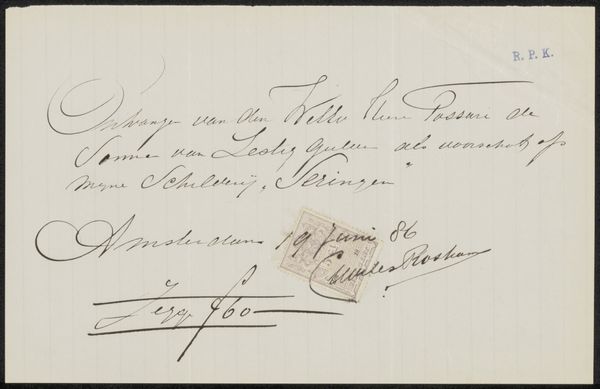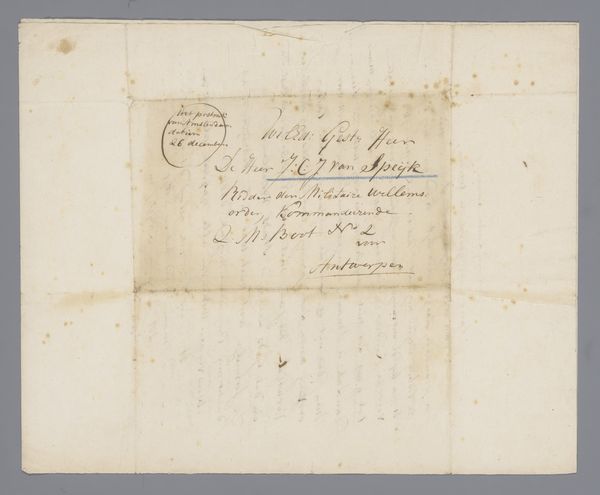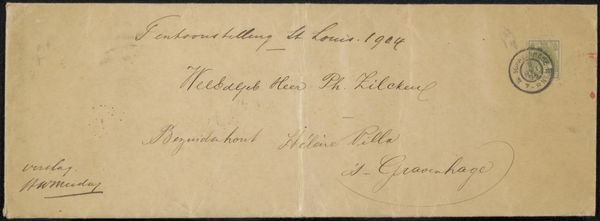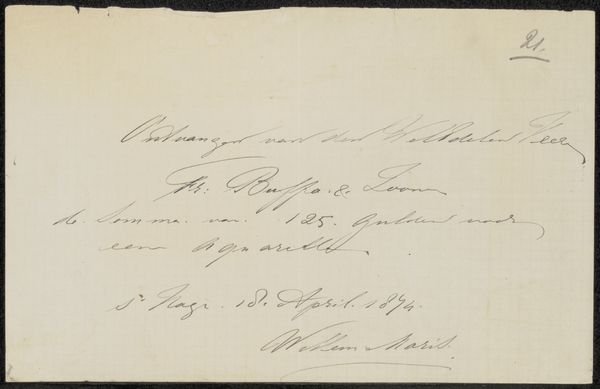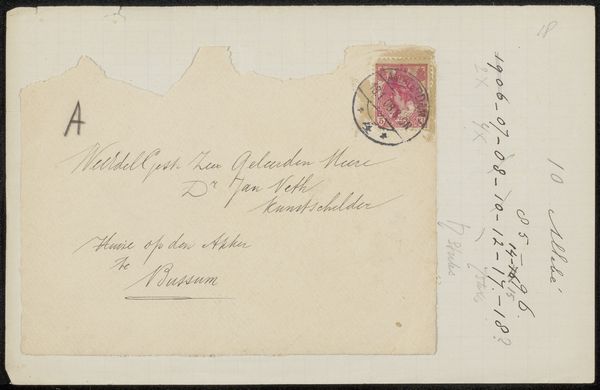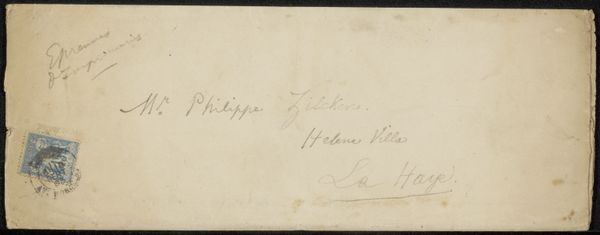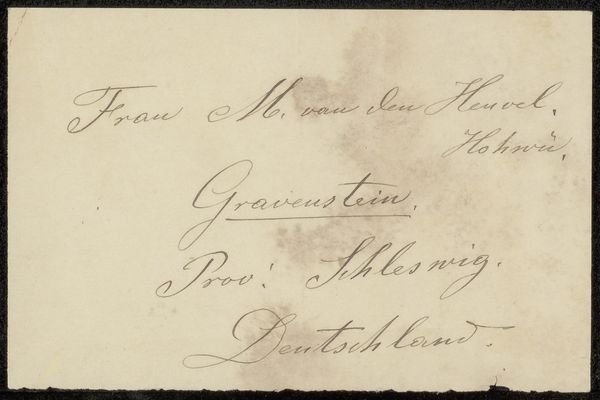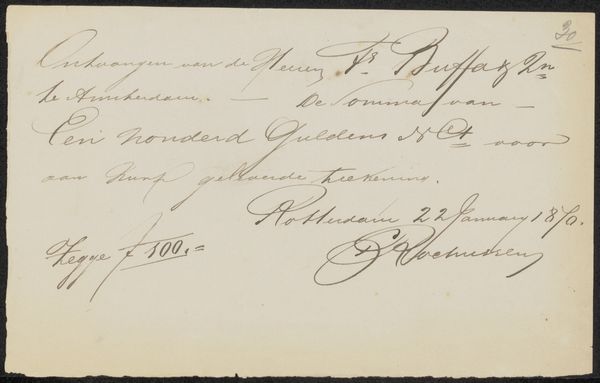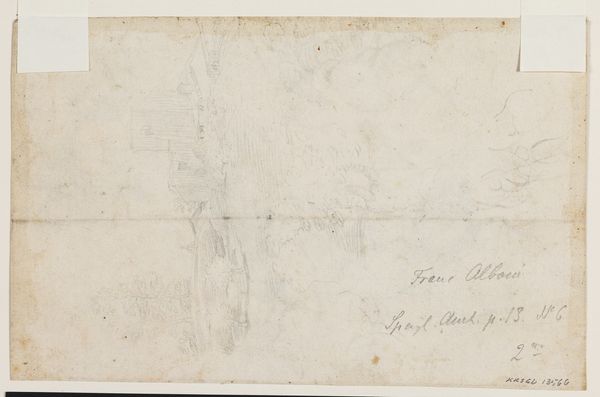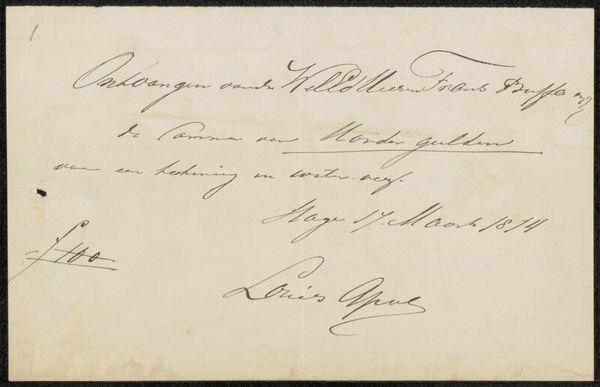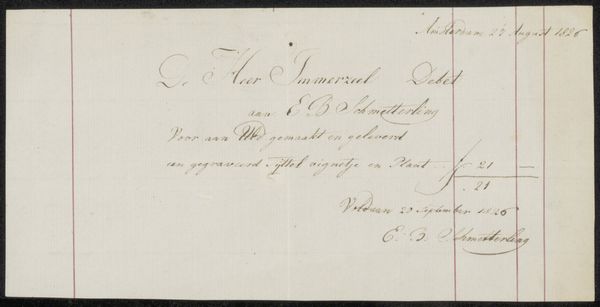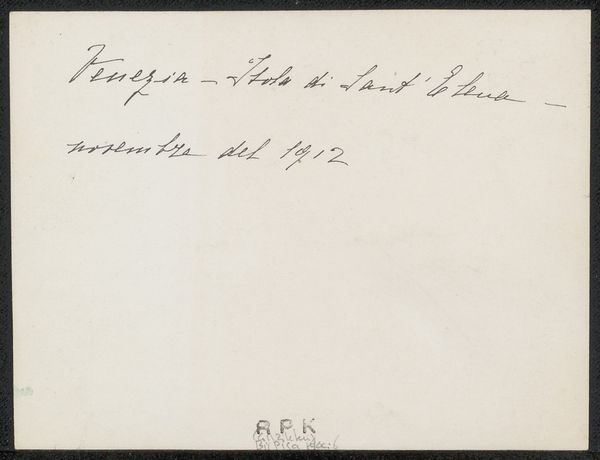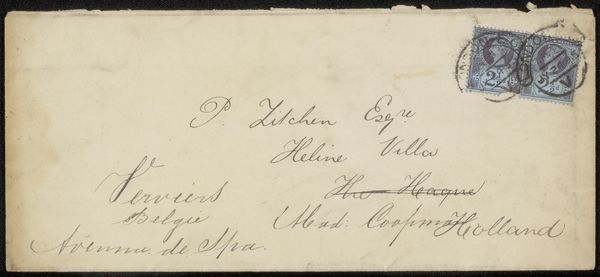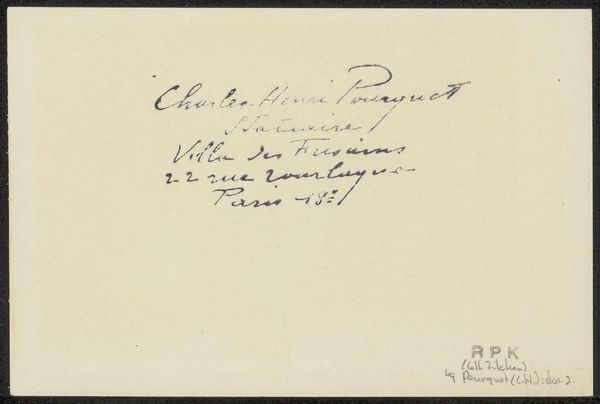
drawing, paper, ink
#
drawing
#
ink paper printed
#
paper
#
ink
#
calligraphy
Copyright: Rijks Museum: Open Domain
Curator: Here we have "Envelop aan Philip Zilcken" created by Suze Groshans, some time between 1873 and 1930. It's rendered in ink on paper. Editor: It’s… charmingly distressed. The tear at the top feels almost violent, yet the remaining script maintains an air of delicate formality. Curator: Precisely. Notice how the line weight in the calligraphy varies, creating a sense of rhythmic movement. The contrast between the delicate strokes and the areas where the ink pools is key to understanding its dynamism. The composition, even with the damage, retains a sense of balanced asymmetry. Editor: It also seems the text has some emotional impact. The name Philip Zilcken is there - an intriguing hint. Perhaps a loved one was reaching out to them at this address, for help, with news? The damage adds a layer to its history – a life once carried around in somebody's pocket, then abandoned, recovered... it lends gravitas. Curator: Interesting take! To my eye, the visible stamp—even in its faded state—represents a standardized, almost bureaucratic symbol. That contrasts vividly with the individualistic flourishes of the handwriting. We have this tension between the personal and the societal inscribed into the very structure of the envelope. Editor: Yes, that’s the pull of language. But for all that, to engage more deeply, doesn't the simple act of sending and receiving a letter symbolize the yearning for connection, that desire to touch someone emotionally at a remove? Curator: Of course! It's easy to interpret such imagery into our present situation, but I see a refined elegance within the forms themselves. The intentional placement of each line in relation to the others and to the edges. The spatial relations on the sheet give this ephemeral object structure and meaning. Editor: For me it all still comes back to the implied human connection. Thank you. This work encourages me to consider the importance and cultural weight of lost things that may not seem beautiful at first. Curator: Indeed. It challenges our notion of beauty beyond pure aesthetic, providing layers to observe, feel, and think about what’s there.
Comments
No comments
Be the first to comment and join the conversation on the ultimate creative platform.
